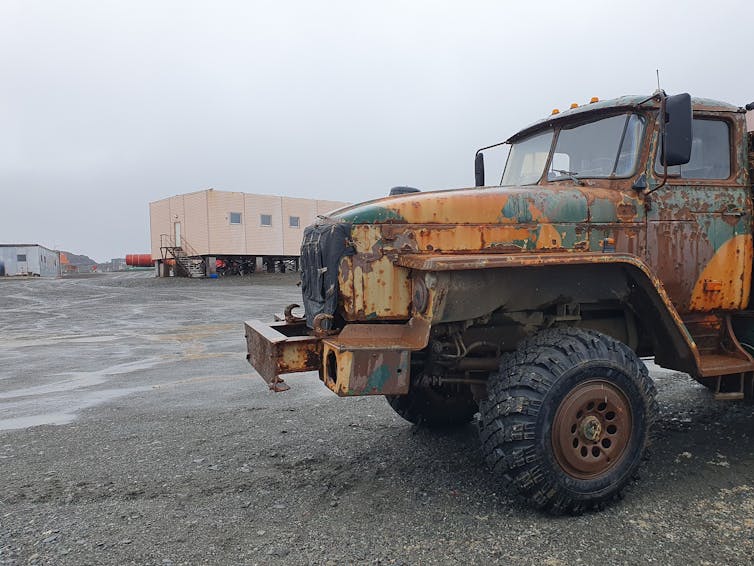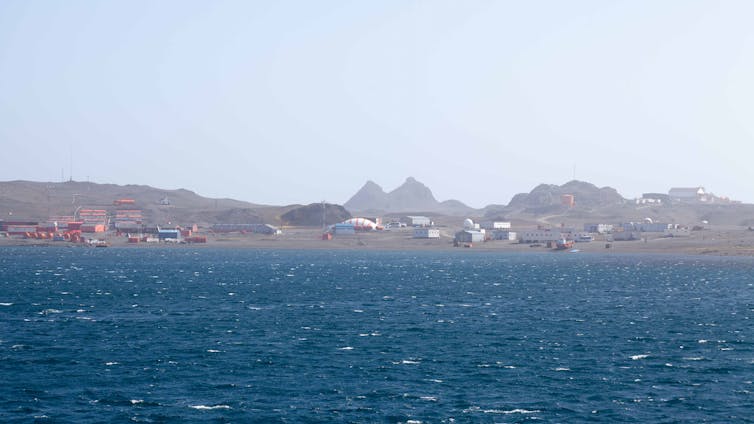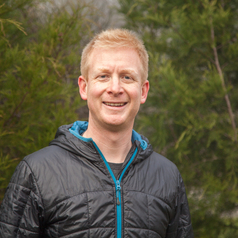Scientific research in Antarctica has played a key role in many important discoveries of the past century. But it has also come at a considerable cost to the environment.
Science in Antarctica is typically based at one of the 77 research stations. While their role is to support science, their isolation means they need to provide the infrastructure of a town.
As well as the local impacts of these stations, the Antarctic environment is facing massive challenges from external pressures such as climate change. The loss of sea ice could mean some of the continent’s most iconic wildlife face extinction this century. For example, the early melting of sea ice recently led to complete breeding failure at several emperor penguin colonies.
So how can we keep doing research in Antarctica while minimising our impact on the environment? This question led to our new research published in the Journal of Environmental Management.
We found little evidence of conservation planning and few limits on permissible activities such as building new stations, despite Antarctica being declared a natural reserve. This has left plenty of room to improve planning, technology and research methods to reduce impacts on the fragile Antarctic environment.
What are the impacts of all these stations?
The majority of stations were built before the Protocol on Environmental Protection to the Antarctic Treaty took effect in the late 1990s. These older stations were established during an era when environmental protection was a lower priority.
As a result, some stations were located in the most rare and sensitive ice-free areas. They probably would not be built there today, but only a few have been removed. Most old stations continue to operate.
At the larger stations, in addition to living quarters and laboratories, facilities include sewage and power plants, bulk fuel tanks and handling, roads, workshops, helipads, runways, wharfs, quarries, fire stations and even one short-lived nuclear reactor.

Russia’s Bellingshausen Station was established in 1968. Shaun Brooks
Adding to the impacts are ongoing demands to expand stations. This might be to provide new scientific apparatus to answer new questions, house more people, improve logistical capacity, or increase the safety of ageing infrastructure.
This background means research stations are often industrial-looking sites, with industrial-scale environmental impacts. It’s a stark contrast to the near-pristine natural reserve they are situated in.
The stations that support science to help understand Antarctica have created the most intense human impacts on the place. These impacts include:
-
a growing disturbance footprint on rare but vital ice-free areas
-
marine contamination that rivals the most polluted harbours in the world
-
non-native species introductions, including weeds and invertebrates
Many stations have displaced some of the best areas of habitat for plants and animals.
Environmental management and impact assessments are now routine practice in Antarctica, and do curtail impacts. However, these practices do not stop the footprint of stations from continuing to spread.
In a case study of a long-established Antarctic station, Australia’s Casey, we found the area of heavy disturbance expanded by 18% and the area of medium disturbance by 42% over a 16-year period. This growth has encroached on one of the most important areas of vegetation in Antarctica.
So what are the answers?
Using better technology is one option. This can include installing cleaner sewage treatment to reduce contamination of the marine environment. And using passive design and renewable energy can reduce fuel handling and storage.
Similarly, substituting harmful research practices with techniques that have fewer impacts is another option. Researchers have, for example, determined the prey species of penguins from poo, rather than handling the birds.
As well as better technology and different research methods, a systematic approach to conservation planning, which identifies the best ways to protect the environment, will help.
Our international team looked into best-practice conservation planning for reserves elsewhere in the world. We adapted these approaches to the unique characteristics of each region of Antarctica and to the various ways in which stations operate.

The Chilean base Presidente Eduardo Frei Montalva alongside the Teniente Rodolfo Marsh Martin Airport and Russian Bellingshausen Station on King George Island. Shaun Brooks
We deliberately designed our conservation planning approach to support station operators to continue to provide new science capabilities. However, we did it in a way that minimises long-term environmental impacts.
For conservation planning to work properly, we need more environmental monitoring data. And data collection must be sustained over a long time.
In the absence of legal limits, we also encourage station operators to set their own self-imposed limits on their footprint and restore degraded areas no longer used. The less area we impact, the more room it gives Antarctic species to shift and adapt to a changing climate.



 NASA Faces Major Workforce Reduction as 20% of Employees Prepare to Leave
NASA Faces Major Workforce Reduction as 20% of Employees Prepare to Leave  Cogent Biosciences Soars 120% on Breakthrough Phase 3 Results for Bezuclastinib in GIST Treatment
Cogent Biosciences Soars 120% on Breakthrough Phase 3 Results for Bezuclastinib in GIST Treatment  Lost in space: MethaneSat failed just as NZ was to take over mission control – here’s what we need to know now
Lost in space: MethaneSat failed just as NZ was to take over mission control – here’s what we need to know now  SpaceX Starship Explodes in Texas During Test, Citing Nitrogen Tank Failure
SpaceX Starship Explodes in Texas During Test, Citing Nitrogen Tank Failure  Neuren Pharmaceuticals Surges on U.S. Patent Win for Rare Disorder Drug
Neuren Pharmaceuticals Surges on U.S. Patent Win for Rare Disorder Drug  Astronomers have discovered another puzzling interstellar object − this third one is big, bright and fast
Astronomers have discovered another puzzling interstellar object − this third one is big, bright and fast  Trump and Merck KGaA Partner to Slash IVF Drug Costs and Expand Fertility Coverage
Trump and Merck KGaA Partner to Slash IVF Drug Costs and Expand Fertility Coverage  Is space worth the cost? Accounting experts say its value can’t be found in spreadsheets
Is space worth the cost? Accounting experts say its value can’t be found in spreadsheets  FDA Pilot Program Eases Rules for Nicotine Pouch Makers
FDA Pilot Program Eases Rules for Nicotine Pouch Makers  Neuralink Expands Brain Implant Trials with 12 Global Patients
Neuralink Expands Brain Implant Trials with 12 Global Patients  CDC Vaccine Review Sparks Controversy Over Thimerosal Study Citation
CDC Vaccine Review Sparks Controversy Over Thimerosal Study Citation  Kennedy Sets September Deadline to Uncover Autism Causes Amid Controversy
Kennedy Sets September Deadline to Uncover Autism Causes Amid Controversy  Eli Lilly’s Inluriyo Gains FDA Approval for Advanced Breast Cancer Treatment
Eli Lilly’s Inluriyo Gains FDA Approval for Advanced Breast Cancer Treatment  Ancient Mars may have had a carbon cycle − a new study suggests the red planet may have once been warmer, wetter and more favorable for life
Ancient Mars may have had a carbon cycle − a new study suggests the red planet may have once been warmer, wetter and more favorable for life  Tabletop particle accelerator could transform medicine and materials science
Tabletop particle accelerator could transform medicine and materials science 




























